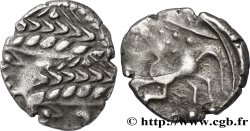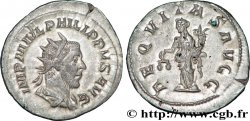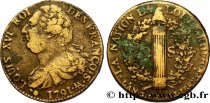正面
正面的文字 [DN MA]GNEN-TIVS P F AVG.
正面的说明书 Buste tête nue de Magnence à droite, drapé et cuirassé vu de trois quarts en avant (A°).
背面
背面的文字 SALVS DD NN AVG ET CAES// [AMB].
背面的说明书 Grand Chrysme accosté de l'alpha et de l'oméga.
背面的翻译 "Salus dominorum Nostrorum Augustus et Caesar" (le salut de nos seigneurs Auguste et César).
历史细节
MAGNENTIUS
(01/18/350-08/10/353)
Magnentius was from the Amiens region and a mint was set up there. Its lifespan was extremely short between the middle of the year 350 and the end of 353. One of the reverse legends used, the Health of Our Lords, Augustus (for Magnentius) and Caesar (for Decency) with the association of Christian symbols shows that Magnentius was a Christian. In this case, was he orthodox following the Council of Nicaea (325) or favorable to Arianism like Constantius II? Magnentius was proclaimed on January 18, 350, thanks to his speed and significant diplomatic activity which enabled him to seize Brittany, Gaul, Italy and part of the Balkans; but he did not succeed in being recognized by Constantius II. Magnentius suffered a severe defeat at Mursa in September 351. Forced to retreat, he lost Italy the following year before seeing Gaul invaded by the generals of Constance. Beaten at Mount Seleucus near Gap, he committed suicide in Lyon on August 10, 353.










 对产品描述纠错
对产品描述纠错 打印
打印 分享我的选择
分享我的选择 提问
提问 Consign / sell
Consign / sell










